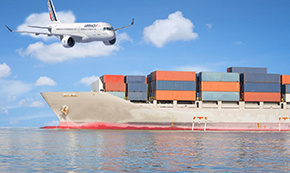All categories >
Do you know why wooden flooring is used on the bottom of shipping containers?
Categories:
Industry Encyclopedia
Time of issue:
2025-05-09 17:19
Views:
In the port and shipping industry, containers are the "superheroes" of cargo transportation. Have you ever noticed that these steel giants have a layer of wooden flooring at the bottom? Today, let's uncover the secrets behind the container's wooden floor.

I. Why is there wooden flooring at the bottom of containers?
1. Reduce weight, improve efficiency.
The main material of containers is steel, which is strong and durable, but it also has its drawbacks, such as being heavy and prone to rust. The addition of wooden flooring is like "slimming down" the container, effectively reducing its transportation weight. This makes the container lighter and more flexible during transportation, improving transportation efficiency and reducing energy consumption.
2. Moisture-proof and breathable, protecting cargo
The maritime transportation environment is humid, with surprisingly high humidity. Wood has a magical property: it can absorb a small amount of water vapor. When a temperature difference occurs between the inside and outside of the container, and water vapor condenses inside, the wooden floor acts like a "water-absorbing sponge," trapping the water vapor and preventing it from directly falling onto the cargo. This is a "lifesaver" for cargo that is sensitive to humidity.
3. Secure cargo, worry-free safety
During transportation, cargo may inevitably move due to bumps. To prevent cargo from "sliding around" inside the container, the wooden floor comes in handy. Iron nails can easily secure the cargo pallets to the wooden floor, firmly holding the cargo in place and keeping it stable during transportation. This greatly reduces the risk of cargo damage.
4. Elastic buffering, durable
Wooden flooring has both "substance" and "elasticity." When heavy objects pass over the bottom of the container, the wooden floor will quickly recover to its flat state. Unlike steel flooring, which is easily dented, wooden flooring provides an elastic buffering function. This not only protects the cargo but also extends the service life of the container.
5. Convenient maintenance, saving time and effort
If the wooden floor is damaged, it is very easy to replace. Unlike steel flooring, which, once damaged, requires a series of cumbersome processes such as rust removal and paint spraying, wooden flooring is much simpler to maintain. The replacement and maintenance of wooden flooring are more efficient, saving time and cost.
II. The "threshold" for wooden flooring is not low
Although wooden flooring has many advantages, not just any piece of wood can be used in containers. These wooden floors undergo strict fumigation treatment and must meet the standards of relevant departments before they can be put into use. This is not only to prevent wood rot but also to prevent the spread of harmful organisms and to protect the ecological environment.
III. The "minor troubles" of wooden flooring
Although wooden flooring plays an important role in containers, it also has its own "minor troubles." Due to the high requirements for wood and a service life of only 1–2 years, the replacement cost of wooden flooring increases. Therefore, the industry is actively exploring new alternatives, hoping to find a more economical, environmentally friendly, and durable material to replace wooden flooring.
Container wooden flooring, seemingly ordinary, actually holds great significance. It not only addresses many problems associated with steel but also provides comprehensive protection for cargo transportation. Although it faces some challenges, it remains an indispensable part of container transportation. In the future, with technological advancements, better materials may emerge, but the contribution of wooden flooring to the history of containers will always be remembered.
Keywords:
Container,Container wood board,Container floor










